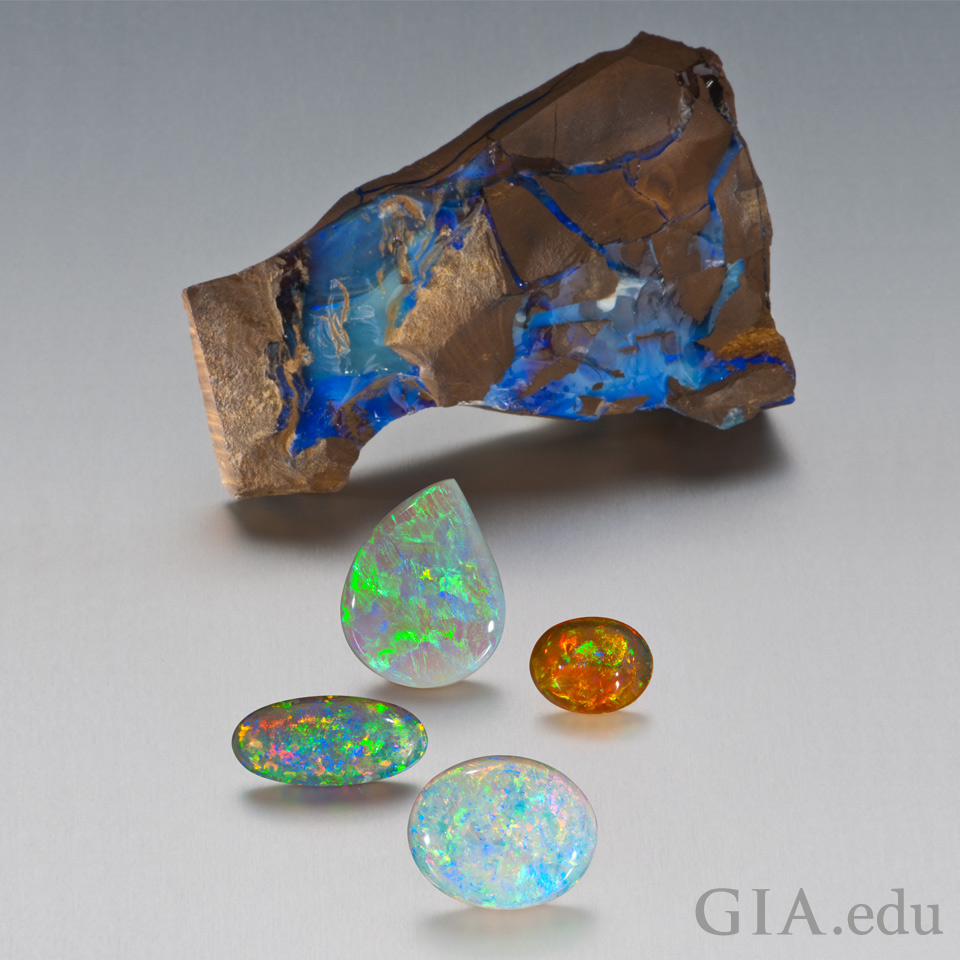Opal’s kaleidoscopic hues have delighted us for centuries. Loved for its spellbinding play-of-color, this October birthstone seems to be a bit magical and mysterious. Get ready to find out where it comes from – and how it forms.
Bedouins thought opal contained lightning and fell from the sky during thunderstorms. The truth is more down to earth: the October birthstone is found in Australia, Ethiopia, Mexico, Brazil and other locales. Typically, it was created when seasonal rains drenched dry ground. The showers soaked deep into ancient underground rock, carrying dissolved silica (a compound of silicon and oxygen) downward. As the water evaporated over time, it left solid deposits of silica in cracks and between layers of the underground rock. These silica deposits became opal. When light passes through the tiny silica spheres that form opal, it breaks up (diffracts) and produces the familiar kaleidoscopic play-of-color.
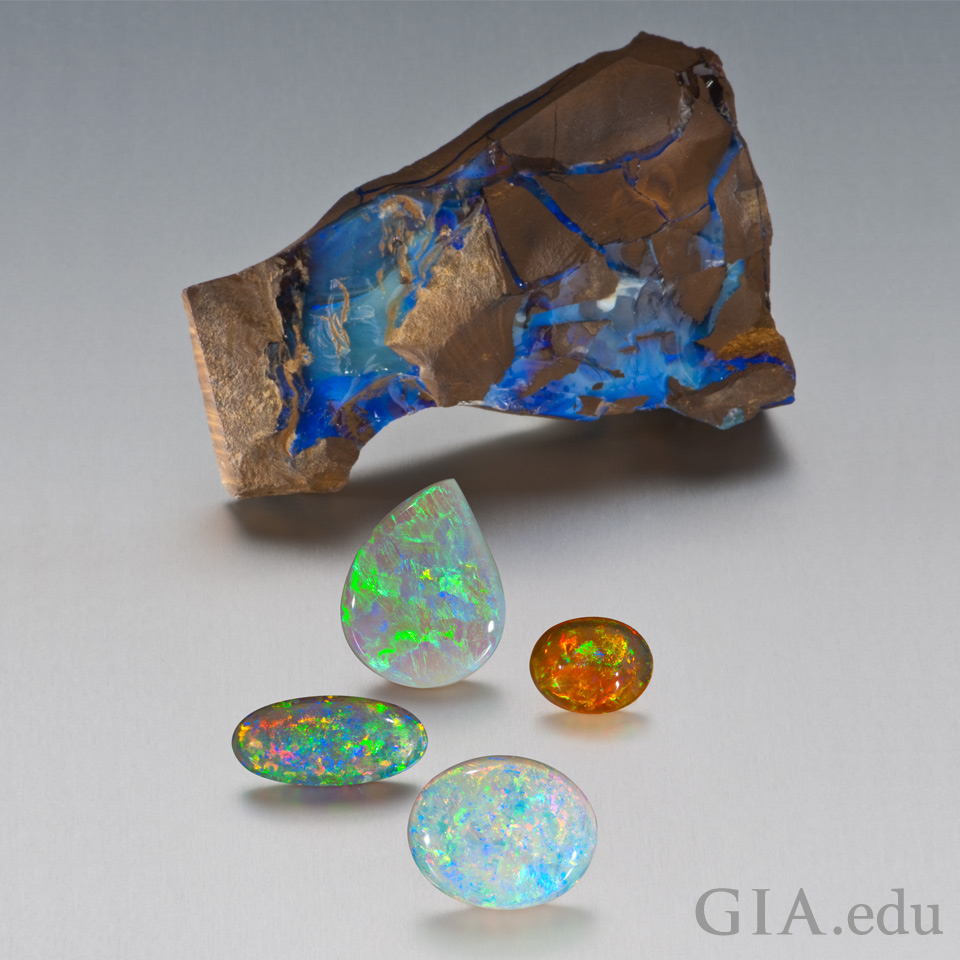
Opal’s characteristic play-of-color is clearly visible in the 59.00 gr of black opal rough from Australia (top), but cutting and polishing really make the phenomenon come to life. Photo: Robert Weldon/GIA.
In addition to play-of-color, opal can also display a variety of background colors that result from the suspension of tiny impurities within the gem’s silica spheres. The trade typically uses background color and play-of-color as a way to organize gem opal into six categories, plus assembled stones like opal doublets or triplets, which facilitates the buying and selling of the gem.
October Birthstone: Types of Opal
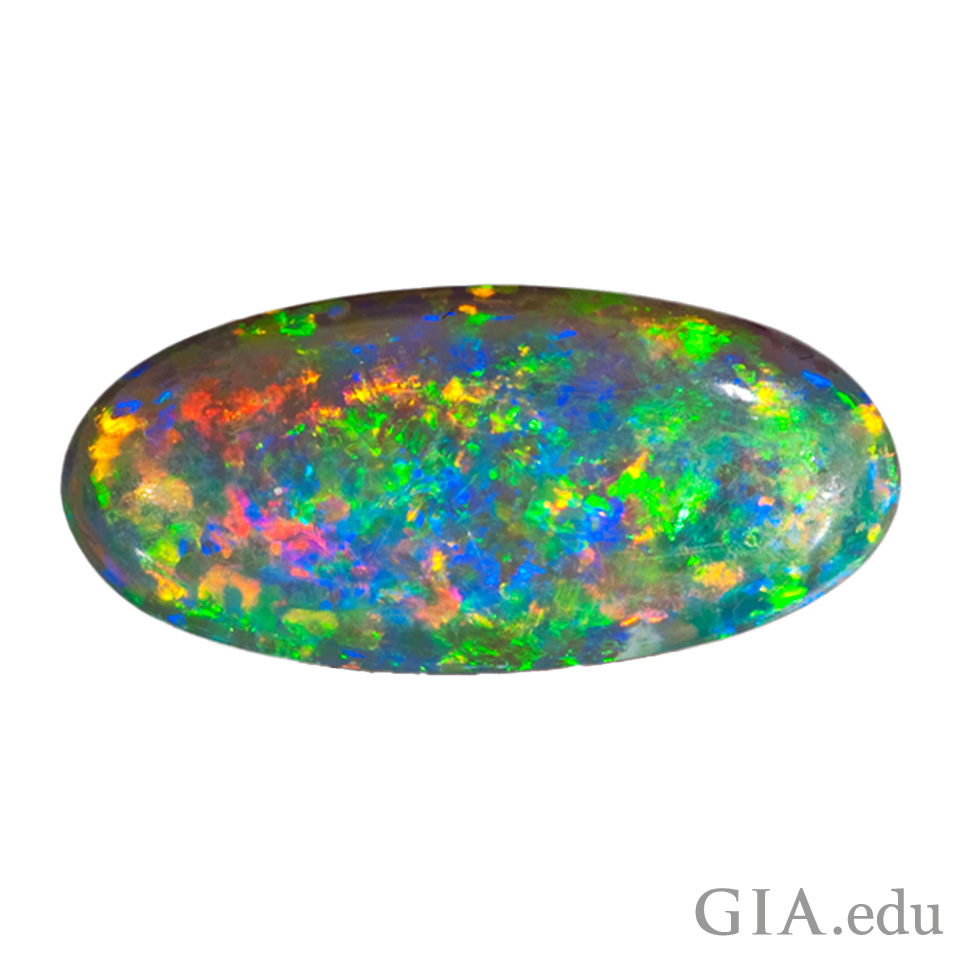
Black opal: Background color ranges from translucent to opaque black to dark gray, and can also be blue, green, or brown, but the color should appear black in reflected light; shows play-of-color. Black opal is found in New South Wales, Queensland, and South Australia. Photo: Robert Weldon/GIA
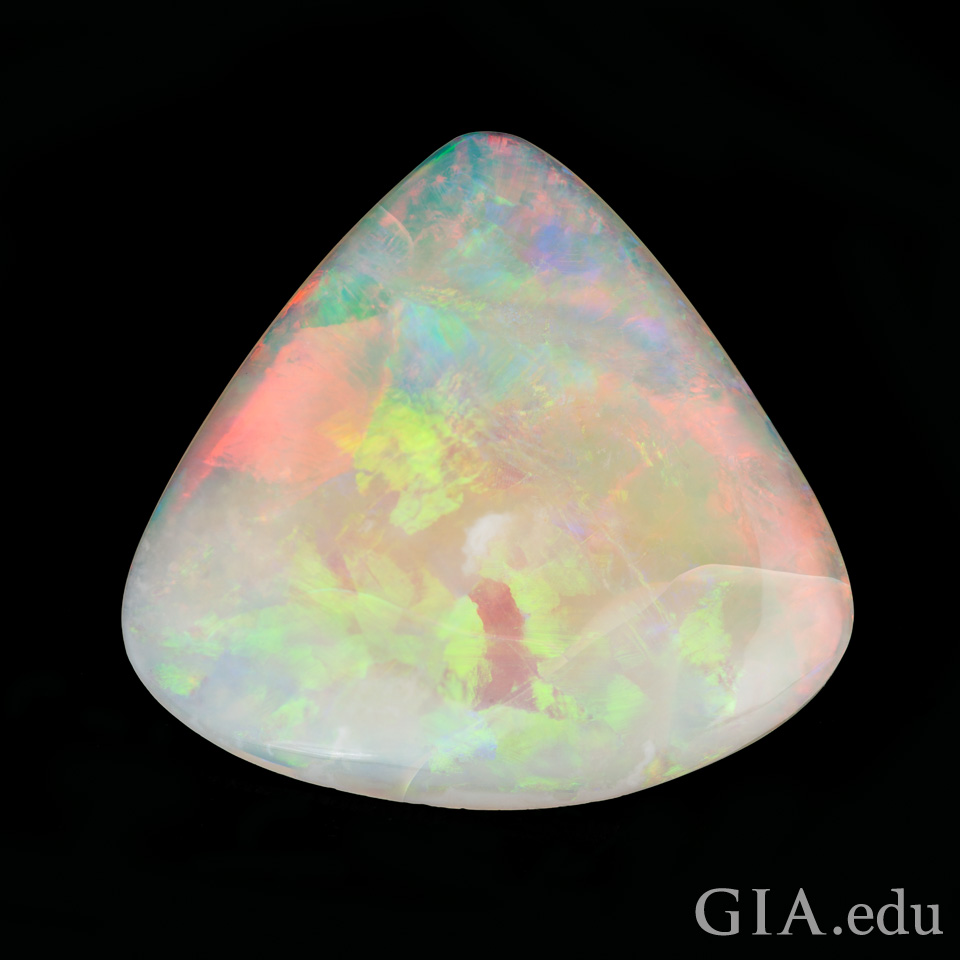
White opal: Background ranges from translucent white to medium gray; shows play-of-color. White opal is found in Australia, Ethiopia and Brazil. Photo: Orasa Weldon/GIA
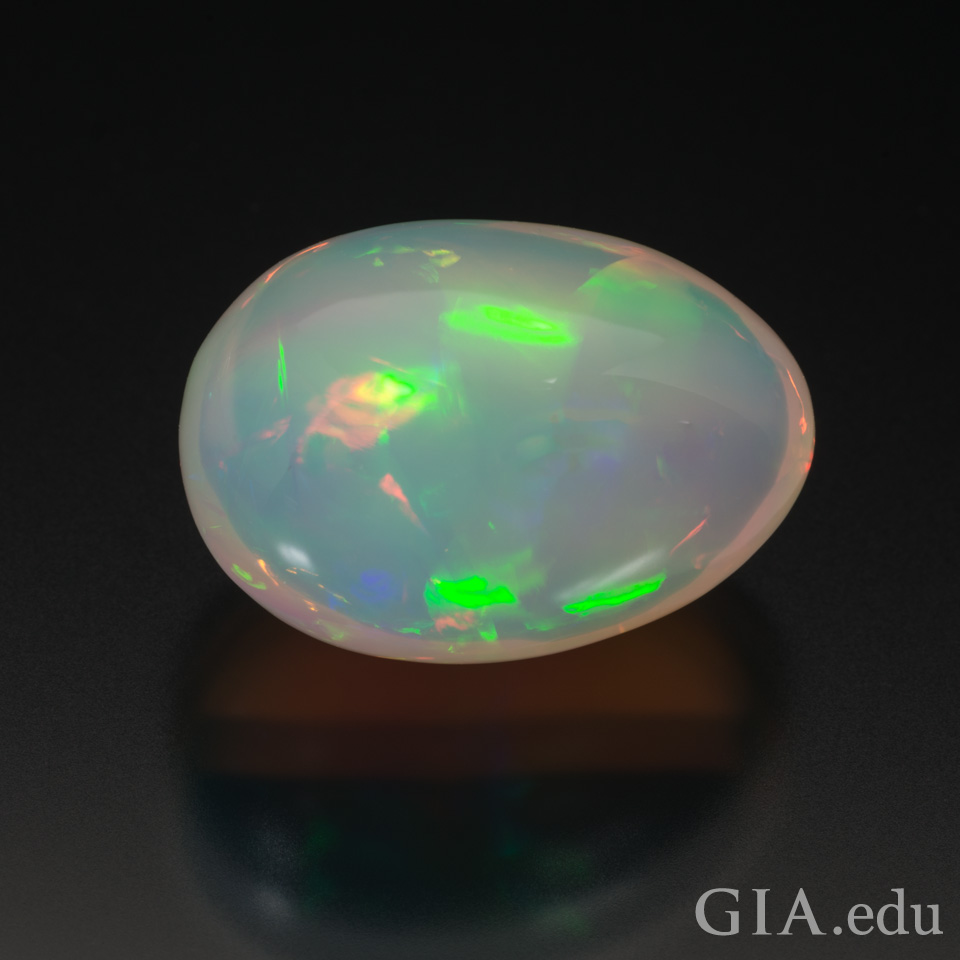
Crystal opal: Background ranges from transparent to semitransparent; shows exceptional play-of-color; is found in Nevada, Idaho and Oregon. Photo: Robert Weldon/GIA. Courtesy: Cody Opal
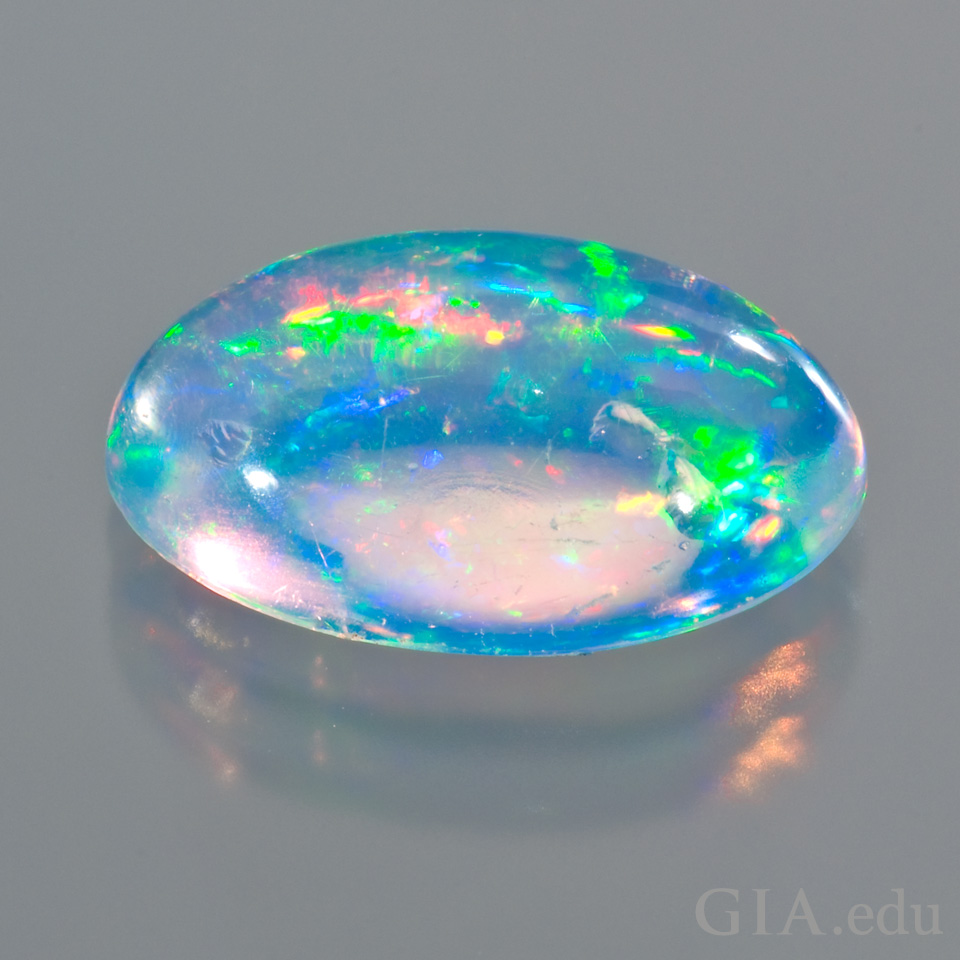
Water opal: Background ranges from transparent to translucent and can be colorless, white, purple, brownish, blue or blue-green in hue; shows faint or no play-of-color; found in Australia, Nevada and Oregon. Photo: Robert Weldon/GIA
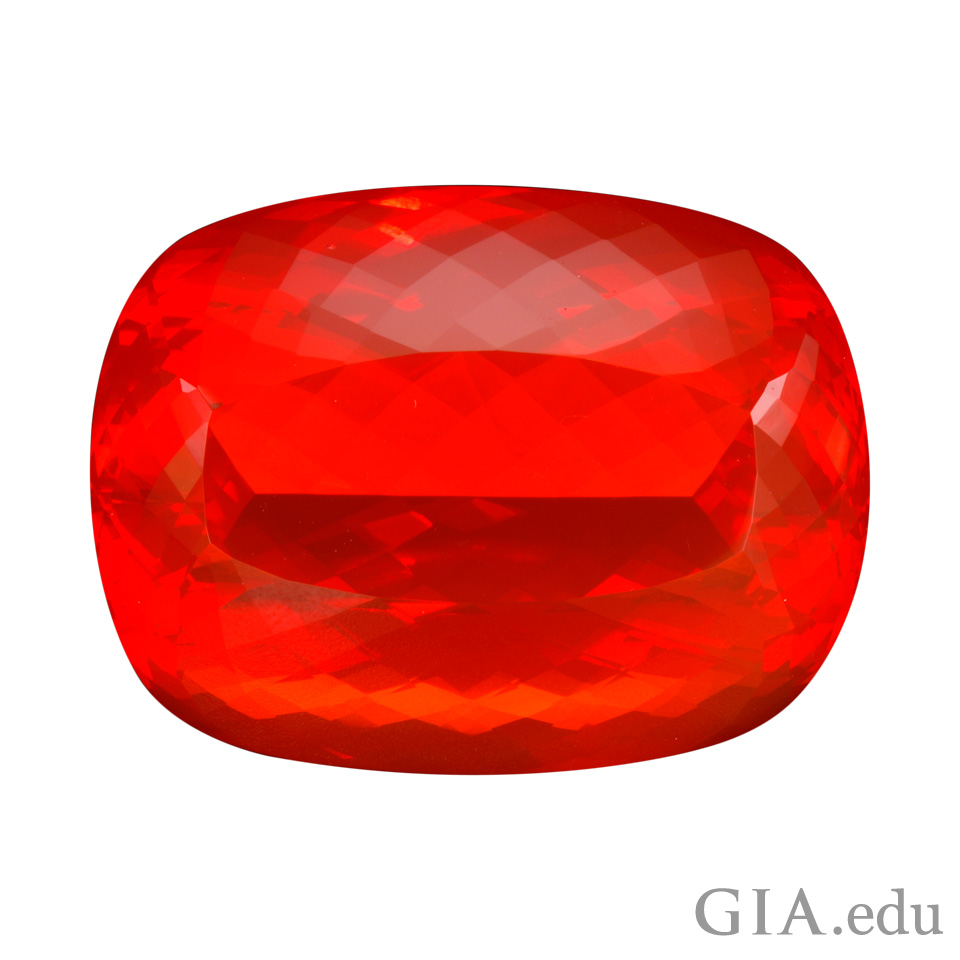
Fire opal: Background ranges from transparent to translucent and can be yellow, orange, reddish orange or red; may or may not show play-of-color. Fire opal is found in Mexico, Brazil and Oregon. Photo: Robert Weldon/GIA. Courtesy: W. Constantin Wild & Co., Idar-Oberstein, Germany
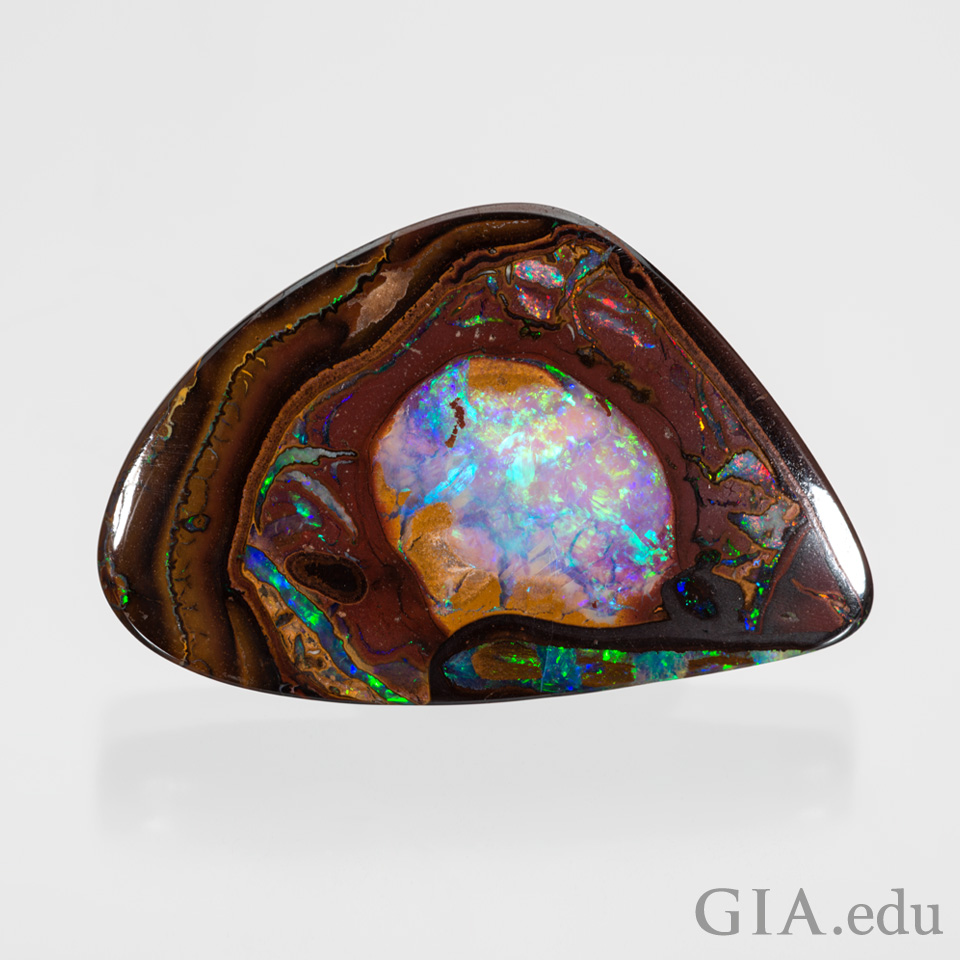
Boulder Opal: Includes part of the host rock, or matrix, in the finished gem; shows play-of-color; found only in northeastern Australia. Photo: Robert Weldon/GIA. Courtesy: Cody Opal
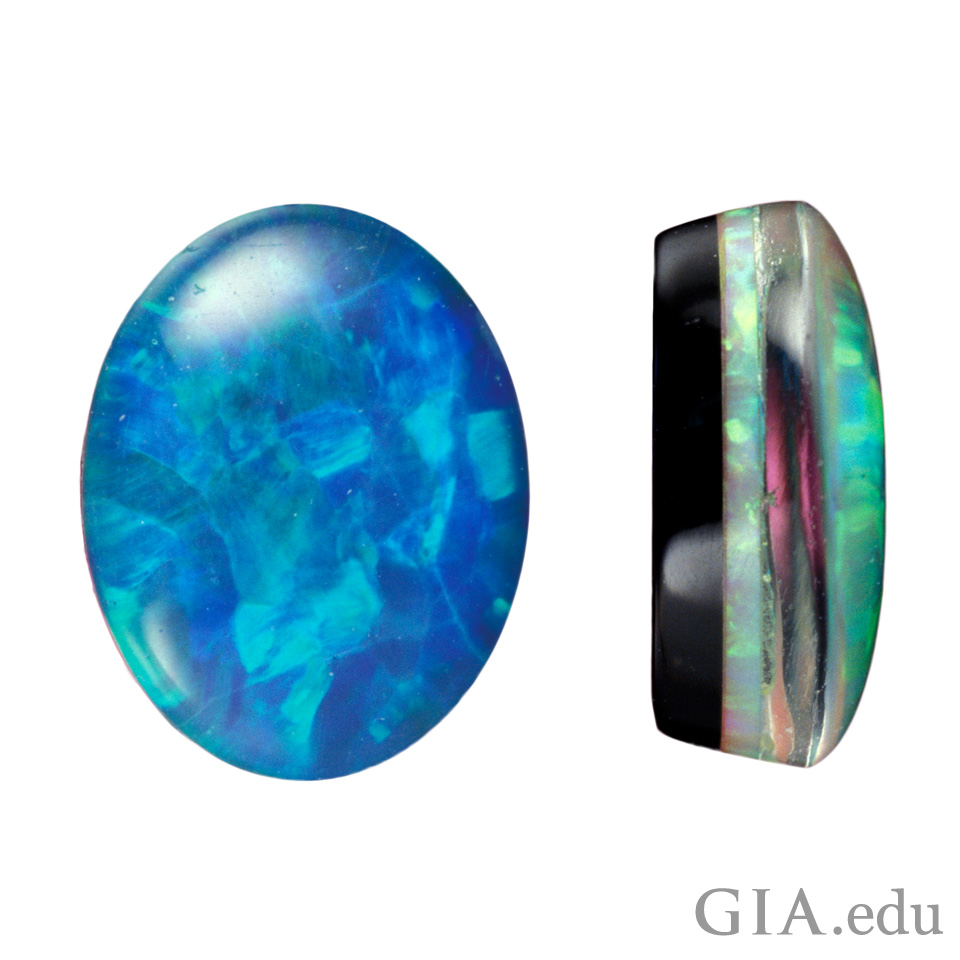
Assembled opal: Layers of gem opal, or of opal and other materials, cemented together to improve durability and appearance (since the stone is assembled, the opal layers may not come from a single location). Photo: Robert Weldon/GIA
Now that you know something about the October birthstone, let’s see where opal comes from.
October Birthstone: Opal from Australia
Australia is the world’s leading supplier for the October birthstone. Lightning Ridge, a small town in New South Wales, is famed for producing the much-coveted black opal.
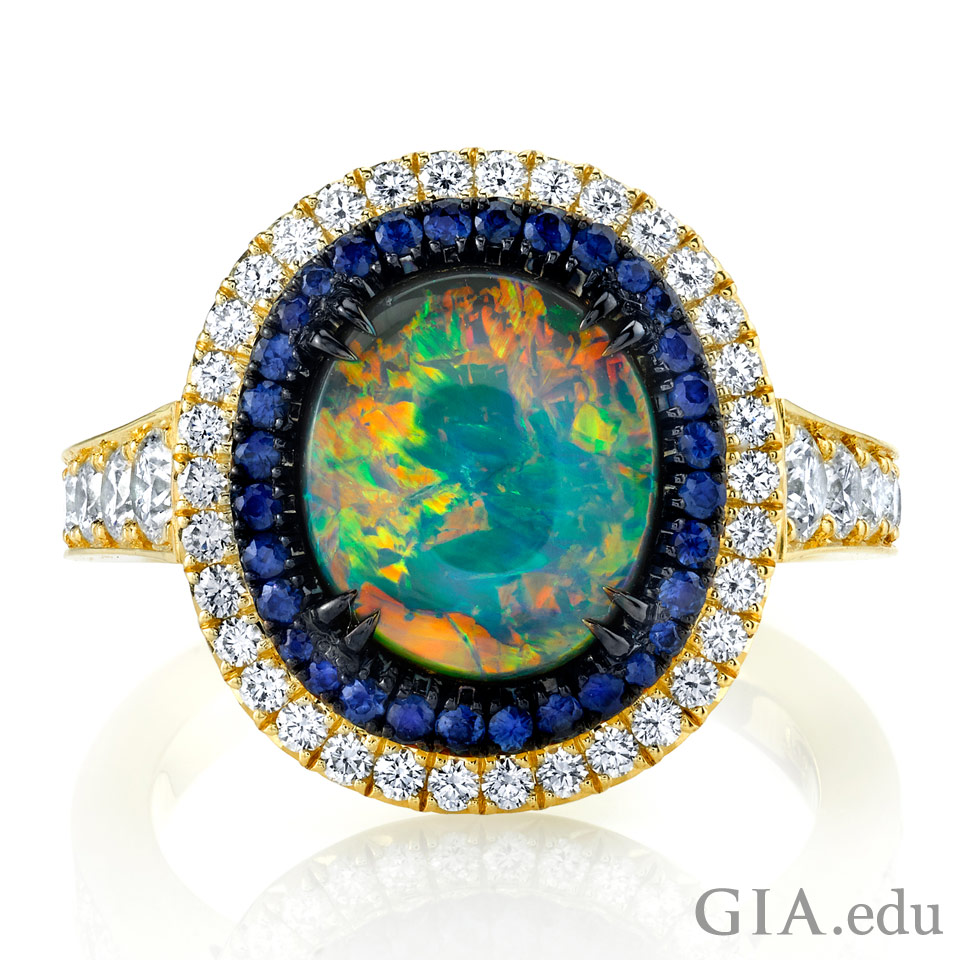
Sapphires and diamonds encircle a 1.92 carat (ct) black opal in this stunning 18K yellow gold and black rhodium ring. Courtesy: Omi Privé
Lightning Ridge, like many of Australia’s opal-producing areas, is hot and arid. Rain is rare. Summer temperatures can be a scorching 112 degrees Fahrenheit (44 degrees Celsius) – and so unrelenting that miners often live in underground housing to escape the heat. Dinosaur fossils occasionally found during mining add a dramatic touch to this harsh setting.
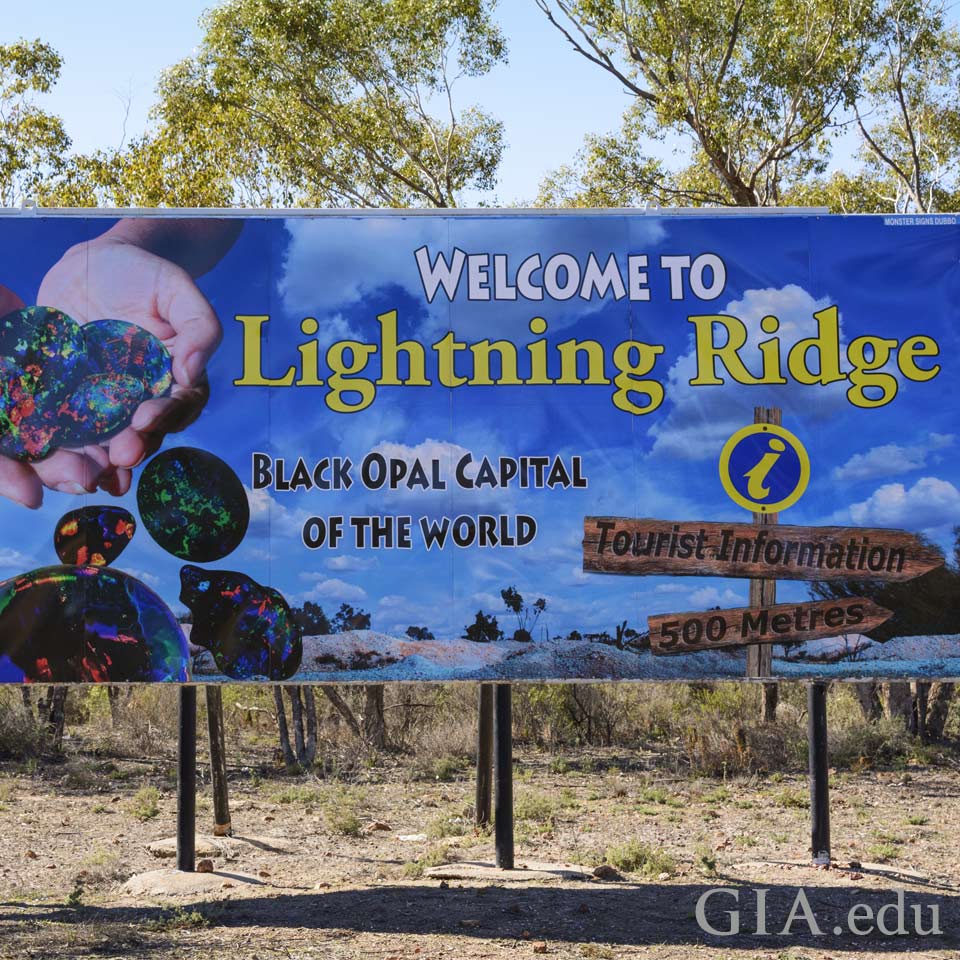
Lightning Ridge is famous for producing the world’s most spectacular black opals and being home to adventurous and eccentric personalities. Photo: Andy Lucas/GIA
Small trees and scrub brush dot the rocky landscape of Lightning Ridge. Despite the unwelcoming environment, about 70,000 tourists visit each year to search for opal and bathe in the natural hot springs.
Black opal is one of Australia’s most famous treasures, but the continent is also a major source of white opal, which is mined in the White Cliffs area of New South Wales, as well as in Mintabie, Andamooka and Coober Pedy in South Australia. Boulder opal, which is found in only one location in the world, is mined in Queensland.
October Birthstone: Opal from Ethiopia
Our quest for opal takes us to Africa, some 340 miles north of Addis Ababa, Ethiopia, to find the predominantly white variety of the gem in Wollo Province, near the village of Wegel Tena. This is a rugged area, with opal being found in a thin horizontal layer along the side of a plateau reaching 8,000 feet. Miners use picks and hammers to remove the opal from its precarious perch in the cliffs above a tributary of the Blue Nile River.
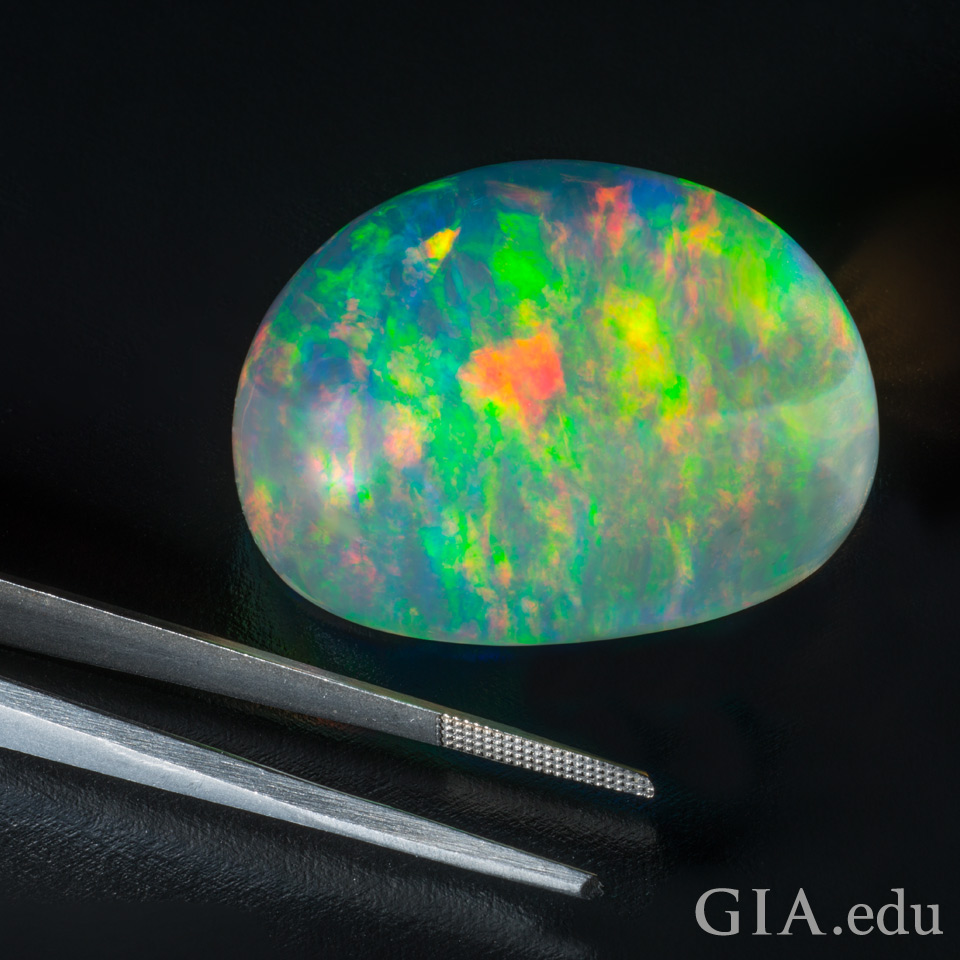
A stunning opal specimen from Ethiopia weighing 264.44 ct. Photo: Robert Weldon/GIA. Courtesy: Tewodros Sintayehu, Orbit Gems and Bill Marcus, DW Enterprises
One of Africa’s largest cities, Addis Ababa is a place where modernity meets the ancient world. Shepherds bring their flocks to city markets, while business people meet in skyscrapers that have remade the cityscape.
October Birthstone: Opal from Mexico
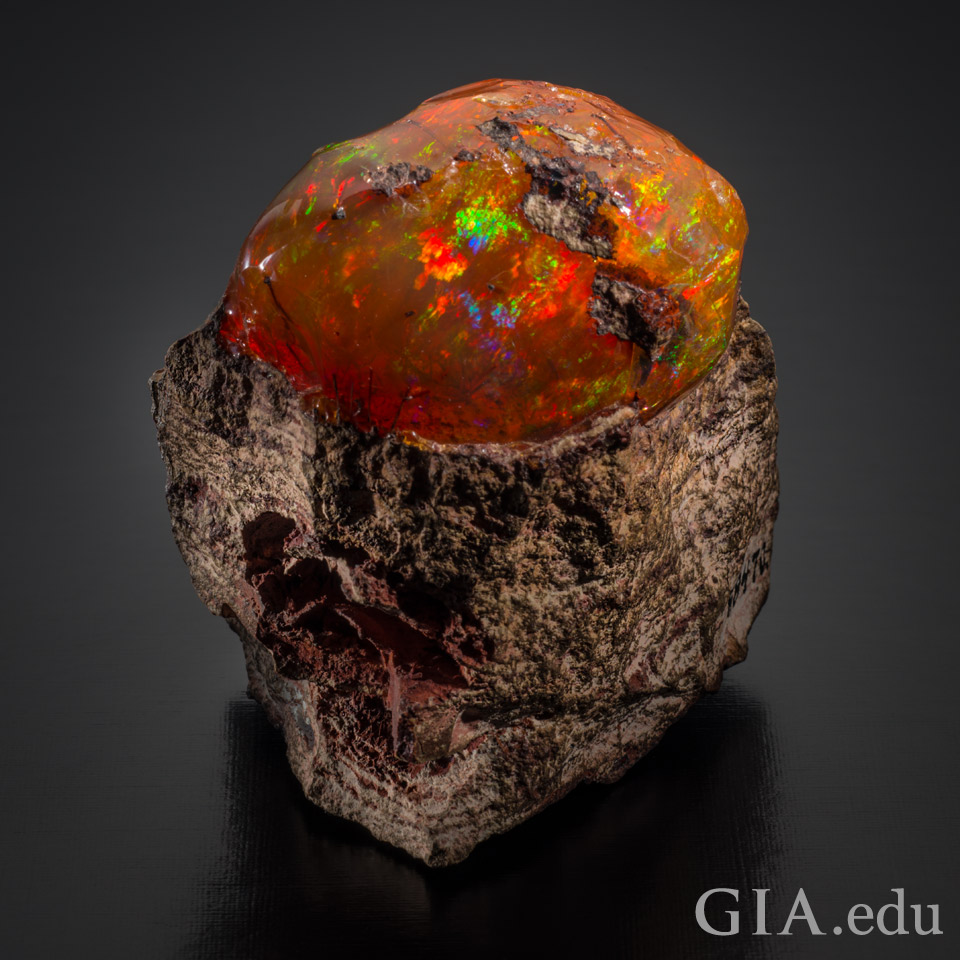
A fine specimen of rough, this Mexican fire opal in rhyolite comes from Querétaro. Photo: Robert Weldon/GIA. Courtesy: Mineralogical and Geological Museum, Harvard University
Although opal has been found in several states of Mexico, Querétero produces the finest fire opal, a vividly colored gem that comes in yellow, orange and reddish orange to red. Located about 140 miles from Mexico City, Querétaro is a UNESCO world heritage site because of its rich culture and stately colonial architecture.
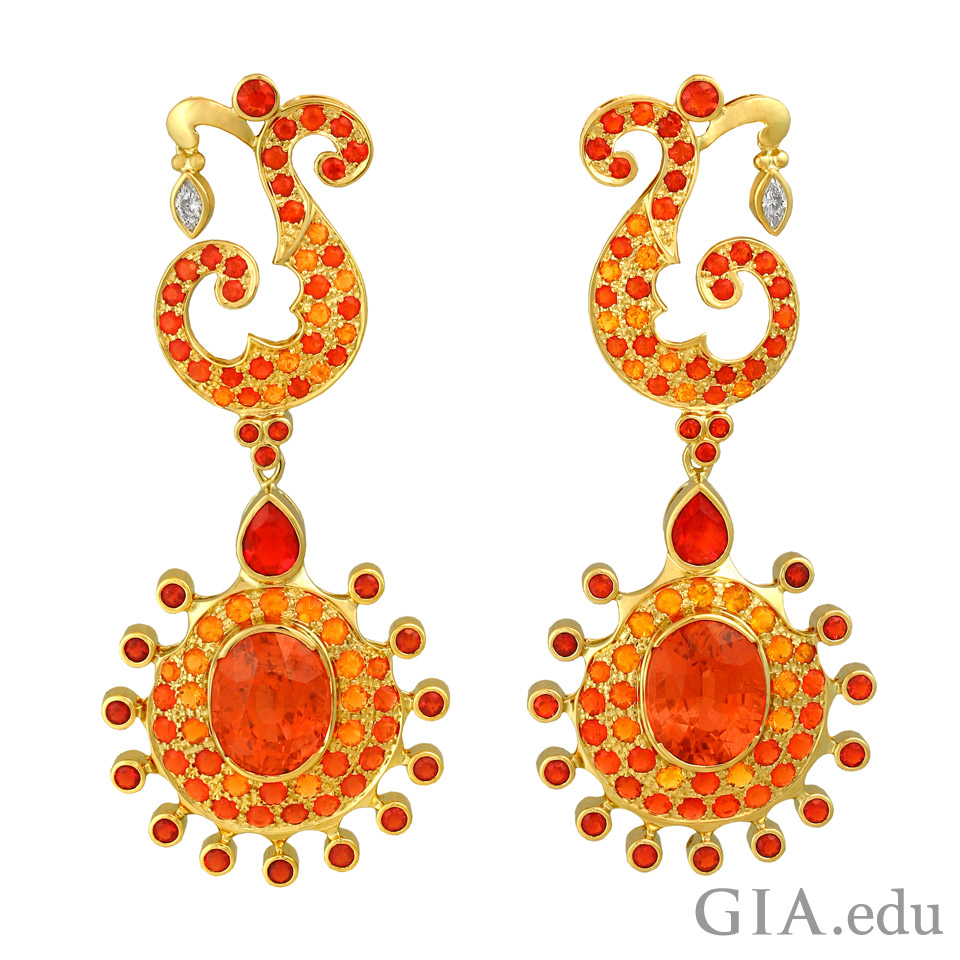
Acclaimed designer Paula Crevoshay used Mexican fire opals, spessartine garnets and diamonds to create “Phoenix Rising” – a dramatic pair of earrings featured in the American Jewelry Design Council’s (AJDC) exhibit Variations on a Theme: 25 Years of Design from the AJDC. Photo: John Parrish. Courtesy: AJDC
Querétaro has two mountain ranges linked by highland plateaus. Forests of pine and oak carpet the mountains, while thorny shrubs and cacti checker the plateaus. Raccoons, weasels and other small animals roam the landscape, while hawks, doves and sparrows circle above it. It is here that opal is mined.
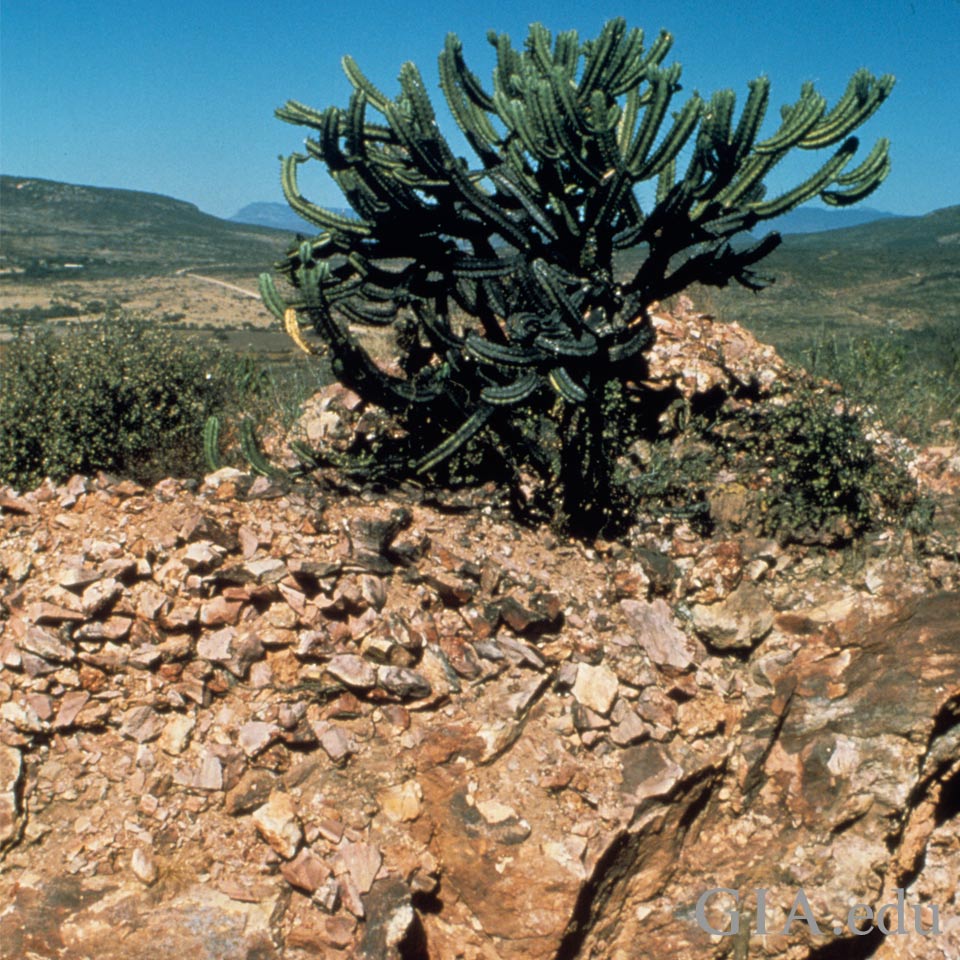
Opal mines in Querétaro can be lonely and forlorn places.
Opal from Mexico has a colorful history. The Aztecs so admired it that they called it “vitzitziltecpatl” (“hummingbird stone”) because it resembled the bright plumage of the bird. It is believed they also mined and carved the famous Sun God Opal, a stunning 35 ct white opal that now resides in Chicago’s Field Museum.
October Birthstone: Opal from Brazil
Brazil is rich in gemstones. Diamond, emerald, aquamarine, amethyst, yellow topaz and tourmaline are some of the gems unearthed there. Opal can be added to the list of the country’s natural riches.
Piauí State in northeastern Brazil is an important source of white opal. Since the 1930s, several mines have emerged in a broad area around the town of Pedro Segundo, which is also known for an international jazz and blues festival held there every June. The town is remote and difficult to reach; the landscape is covered in small trees and brush. In recent years, more than 2,000 people have been involved in mining and processing opal from this distant locale.
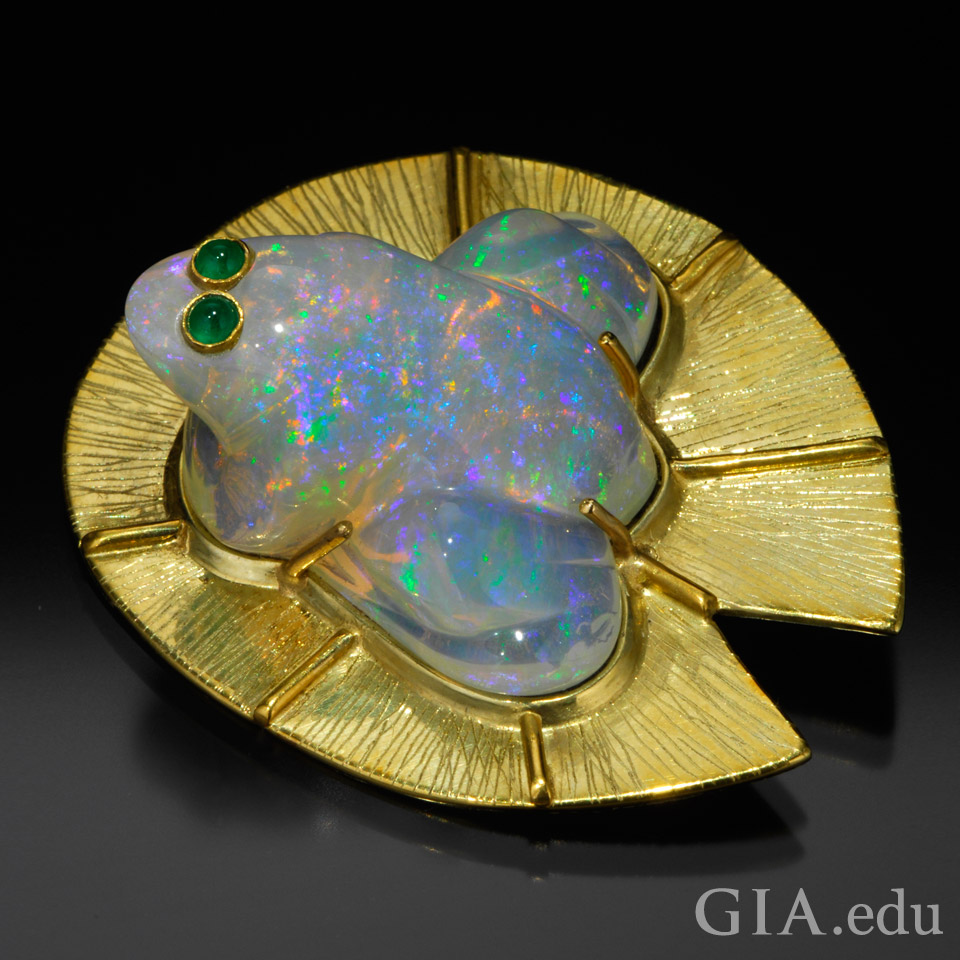
This playful frog on a gold lily pad, made of white opal from Brazil’s Piauí State, dazzles with its emerald eyes. Photo: Robert Weldon/GIA. Courtesy: Wallace Goldsmithing
Central Europe, Honduras, Indonesia, Madagascar, Peru, Turkey and the United States are also sources of opal. The fields of Australia, however, are by far the most productive in the world.
A gemstone’s origin can lend it cachet and opal is no exception. The quality of a gem, however, may be more important than where it’s mined. Our Opal Buying Guide can help you make an educated choice.
If you’re still on the hunt for an October birthstone, you might consider tourmaline, October’s other birthstone – it comes in a spectacular array of colors sure to please the most discerning October baby!
SOURCE:http://4cs.gia.edu/en-us/blog/october-birthstone-where-opal-comes-from/
